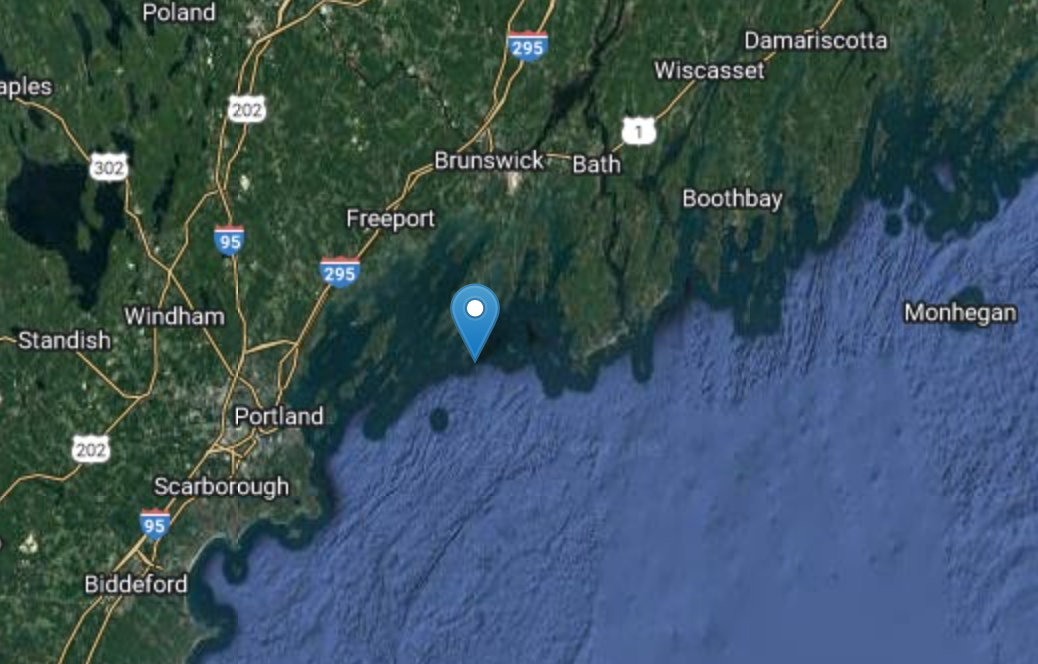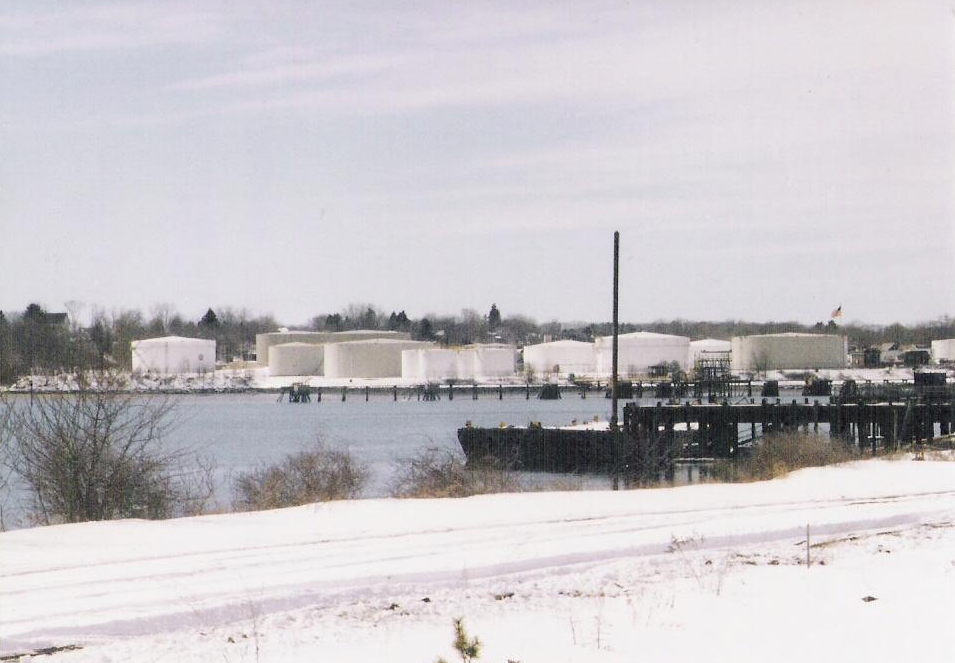Casco Bay in Maine is one of the busiest and most commercially productive regions along the Maine coast. Portland is the largest city in the state, with Portland Harbor at the southwest end of the bay. According to the Maine Port Authority, the Port of Portland is the largest foreign inbound tonnage transit port in the United States, the largest tonnage port in New England, and the largest oil port on the US East Coast. It annually handles over 200,000 international passengers, and 17,000 cargo containers onto nearby rail systems. Oil tankers deliver approximately 125 million barrels of oil products, and cargo ships deliver 800,000 tons of dry bulk cargo. In 2016, the Portland Pipeline Company transported about 8 million barrels of crude oil to Montreal, Canada. The Portland Fish Exchange, where commercial fishermen can deliver their catches for auction to wholesalers, handled about 20 million pounds of seafood per year during the early 2000's. Although groundfish landings have diminished in recent years, the Exchange remains an active service for the fishing fleet.
The Maine Department of Marine Resources (DMR 2018) reports that the bay produced over 13 million pounds of lobsters, approximately twelve percent of all commercial lobster catches in the state. There are dozens of aquaculture farms within the bay, primarily for shellfish production. The abundance of shipping, fishing and recreation in the bay and its economic impact on the greater Portland area presents a good case for continued study of its tidal and non-tidal currents.
Casco Bay has also been an area in which large cell counts of Alexandrium fundyense have been recorded (Doucette et al., 2005; Anderson et al., 2005), such as in the northeastern region at Lumbo’s Hole in Harpswell Sound and at the mouth of the New Meadows River. The closing of parts of Casco Bay to commercial shellfishing because of paralytic shellfish poisoning (PSP) is not uncommon. The presence of A. fundyense in the bay has led to some conceptual models of potential pathways of PSP toxins into and out of the bay. A high resolution circulation model of the bay and its association with the Western Maine Coastal Current (WMCC) may contribute to a better understanding of pathways that could transport these toxins in and out of the bay.
References:
DMR 2018, Department of Marine Resources, 21 State house Station, Augusta ME 04333-0021
DMR
Doucette, G.J., Turner, J.T., Powell, C.L., Keafer, B.A., Anderson,D.M., 2005. Trophic accumulation of PSP toxins in zooplankton during Alexandrium fundyense blooms in Casco Bay, Gulf of Maine, April-June, 1998. I. Toxin levels in A. fundyense and zooplankton size fractions. Deep Sea Research II 52 (2005) 2764-2783.
Anderson, D.M., Keafer, B.A., McGillicuddy, D.J., Mickelson, M.J., Keay, K.E., Libby, P.S., Manning, J.P., Mayo, C.A., Whittaker, D.K., Hickey, J.M., He, R., Lynch, D.R., Smith, K.W., 2005. Initial observations of the 2005 Alexandrium fundyense bloom in southern New England: General patterns and mechanisms. Deep Sea Research II 52 (2005) 2856 – 2876.

